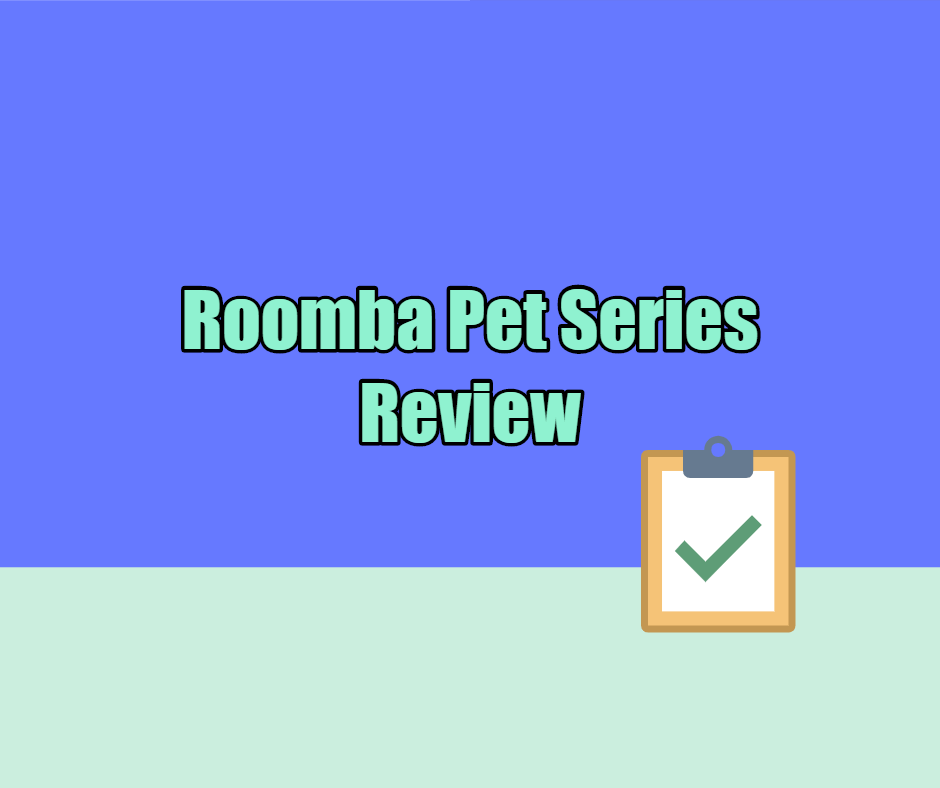In late 2010 and into 2011, iRobot introduced a trio of robot vacuums dubbed the Roomba Pet Series. They were specially designed to collect pet hair from flooring and carpet with additional features other early Roomba models didn’t have. Fast forward eight years and the Pet Series is no longer relevant. In fact, they aren’t even available for purchase any longer.
In this article, we will cover what the Roomba Pet Series was, which models have replaced them and why. If you are a pet owner and looking for your first Roomba robot or looking to replace an older Pet Series model, you are in the right place.
Contents
What is the Roomba Pet Series?
In a nutshell, the Roomba pet series was a set of three 500 series robots that were specifically designed to clean up pet hair, kitty litter, trap pet dander and keep your home clean from what your pets leave behind. There were three Roomba’s in the Pet Series line up: The Roomba 532, Roomba 562 and the Roomba 572.
You should note, right off the bat that these three models are no longer available for purchase. While you may be able to find them on second-hand sites like Craigslist or E-Bay, it isn’t recommended that you buy them.
iRobot doesn’t offer them for sale; there is no support and the collection bins, brush rolls and filters they use are no longer being manufactured. The batteries are also already a decade old and new ones found for sale do not fit these models.
What was so special about these models, though? Let’s have a look down memory lane.
The Roomba 532
The Roomba 532 was the first in the line up and was distinguished as the model for pet owners to have. Not only did it have better suction, but it also came with two collection bins. The standard bin and a high-capacity bin. They were interchangeable, and it was thought that the larger bin could hold more pet hair.
The idea was that you would run the machine with the larger bin in place and then rerun it with the normal bin. This would collect all the pet hair and debris on the first run and then the smaller messes and pet dander on the second.
The second draw was the extras included in the purchase price. First, you received an extra set of filters and brushes. This allowed you to save time and money by being able to run your routine maintenance on schedule without taking the robot out of commission for a few days.
Lastly, it also included two of the original-version virtual wall barriers. These always-on barriers helped guide the robot around your home and prevented access to areas you didn’t want it to be. Including them in the package is now standard practice for most newer models, but in late 2010, it was a new incentive.
The Roomba 562
A few months after the 532 was released, Roomba came out with the second in line for the Roomba Pet Series; the Roomba 562. This time it was the robot that got the upgrades as the bonus contents remained the same.
While consumers still got extra filters, brush roll and two virtual walls, they also got a vacuum with more local controls. The controls included 7-day scheduling abilities. Through a series of button presses (and confirmations), you could make the robot clean every day, or every other day on a seven-day rotation.
Aside from the local controls the 532 and 562 were otherwise identical. They had the same interchangeable collection bins, batteries and suction power. The local controls did offer more control abilities, though, which made it appealing to new consumers.
The Roomba 572
Shortly after the new year in 2011, Roomba released the third and final Pet Series model; the Roomba 572. There were some slight improvements made to the model that justified its much higher price tag.
For instance, it now came with three collection bins. The two collection bins that are found on the other models were the same, but iRobot released the third bin that and a scrubber attachment that effectively cleaned the brush roll as the robot ran around the floor.
The other change to the robot was the inclusion of the Roomba remote control. You could start and stop cleaning cycles, create schedules in the same manner as the local controls and even direct the robot as it cleaned.
The big draw though was the inclusion of the virtual lighthouses. These were the newest addition to the iRobot family and were a step up from the virtual walls. As far as the robot itself though, little upgrades were made and the series of robots (aside from local controls) remained almost identical in abilities and power.
The Entire Pet Series Has Been Discontinued, Why?
Things change in nine years, including technologies and consumer expectations. There are several reasons that went into the decision to discontinue the pet series. Let’s take a look at what they are.
Improvements in Robotic Technology
While the early 2000s saw home robotics in its infancy, it didn’t take long for new features and options to become available. While there have been several improvements across the board as far as the Roomba line up is concerned, two reasons were the major factors in the decline of the pet series.
Increases in Motor Speed and Suction
The first improvement came with the introduction of the second and third generation motors. By the time the 700 series came along, the motors had two speeds and could distinguish when the robot was on hard flooring or carpet.
These seemingly small advances made a more efficient clean and stronger robot. Able to cover more ground in less time and pick up more debris while doing it made the 500-series (and thus the Pet Series) obsolete.
Smart Device Integration Almost Killed off Local Controls
As home robotics grew in popularity, so did things like smartphones and in-home virtual assistants. Not only could we access the internet and have push button apps at our fingertips through our phones, but we could also use our voice to control things in our homes.
The iRobot Home app allowed Roomba owners to fully control their robots with a few simple taps on their phone screens. You didn’t even have to be in the same location as the robot, let alone within two feet (as you did with the remote control).
Also, the integration with Amazon Alexa and Google Assistant enabled devices meant you could start, stop or get status reports on your robot without leaving the comfort of your recliner.
Customer Complaints and the Demise of the Pet Series
One of the most overlooked features of the Roomba improvements is the consumer’s voice. The company listens to the complaints and concerns of its consumers and addresses those in future upgrades. Some of the largest complaints led to huge advancements in the robot vacuum industry.
Brushless Rollers Helped Ease Maintenance Concerns
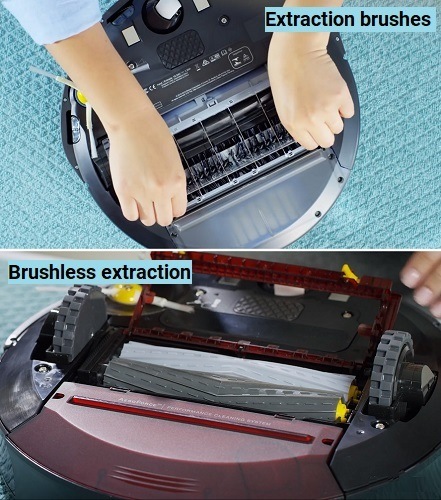
By the time the 800 series was being introduced, many consumers were complaining that the bristles on the brush roll were difficult to clean. Much akin to the rollers on a standard upright, the bristles got tangled with hairs, string and carpet fibers.
Roomba introduced the brushless rollers as an answer to these concerns. The rubber paddled rollers were strong enough to agitate carpet, soft enough to not scratch softer flooring (such as pine or sealed surfaces) and clean up was easy.
The rollers popped out with a press of a button and instead of spending hours with tweezers or scissors getting tangles out of bristles, users could simply wipe the rollers off in seconds and put the robot back in service.
Camera-Based Navigation Increased Productivity
Early in the 900 series, the navigation and sensor technology iRobot calls “iAdapt” got a facelift. Instead of relying on bump sensors and infrared lights alone, cameras were added to “see” and build maps of the floorplan and surroundings.
This technology led to the robots being able to resume cleaning after a battery recharge right were they left off and the ability to use more human-like cleaning patterns. Overall, the efficiency and cleaning of the robots increased dramatically. This lead to a better collection of pet hair and debris in a single cleaning cycle and pretty much ended the need for a pet series line.
Which Modern Roomba Should You Get if You are Looking for Something Similar to the Pet Series?
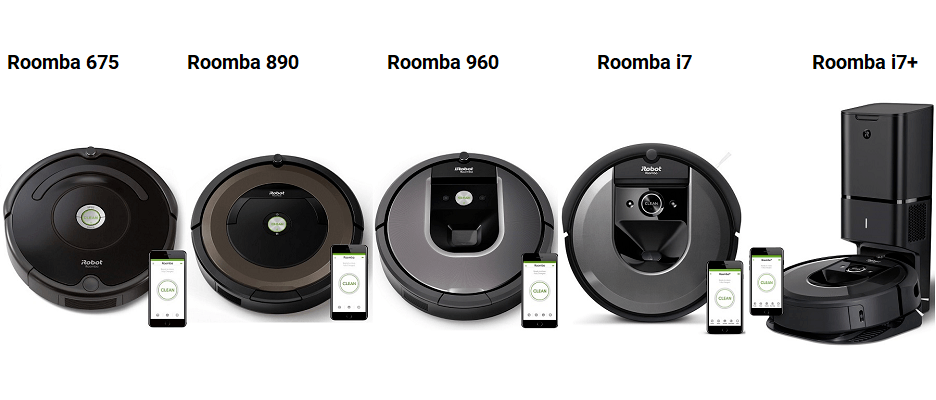
There are five models that can easily replace the Roomba Pet Series. Of the five, we can only highly recommend three of them. However, every situation is different, so we will look at all five to help you find the best match for you.
The Roomba 675
The 600 series was one of the first line ups to include better filtration and a more standardized motor. The increased suction provides more power and more battery efficiency than the 500 series that the pet series models were a part of.
While similar in style and functionality, the Roomba 675 added wireless capabilities allowing you to use the mobile app or voice commands that the pet series models didn’t have. However, it does still have the bristle brush roller and the tangles and maintenance time are not addressed.
Because of the extra hassle and limited availability (due to its age), we don’t recommend starting with this model. Unless you will only be running the robot once a week or less and have limited pet hair accumulation, there isn’t a reason to choose the 675.
The Roomba 890
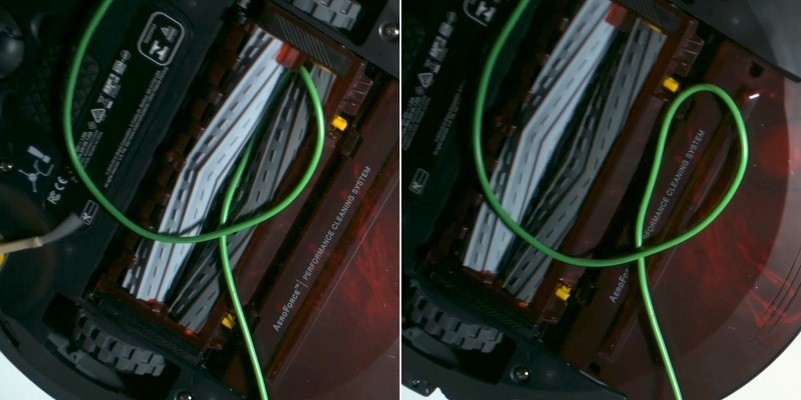
In contrast, the Roomba 890 is everything the 675 is, plus some. The Roomba 890 is the top of the 800 series line up and has every feature you should need when you are just starting out. Like the 675, you will find a more efficient battery, longer runtimes and wireless communications.
However, unlike the 675, the Roomba 890 has the brushless extractors. These rubber paddled extractors are self-cleaning, which negates the need to exchange the collection bin for helping keep them clean as the 572 had. They also detect tangles from power cords and large debris (like your kid’s socks they left on the floor).
When activated, the tangle detection will stop the robot and reverse the rollers to free itself from the tangles and maneuver around them.
Overall, the Roomba 890 is a great model to choose for pet owners, especially for those with multiple pets that love to shed constantly.
The Roomba 960
The 900 series, for a few years in a row, was considered one of the best line ups ever released. Spearheaded by the Roomba 980, the 900 series unveiled new features and technologies that were quickly adopted by other manufacturers as well as being added to earlier Roomba models.
The Roomba 960 is your middle-of-the-road pet model and comes highly recommended. It has all of the features that the 890 has plus a couple of extra. While you will pay a little more, the feature list makes the price well worth it.
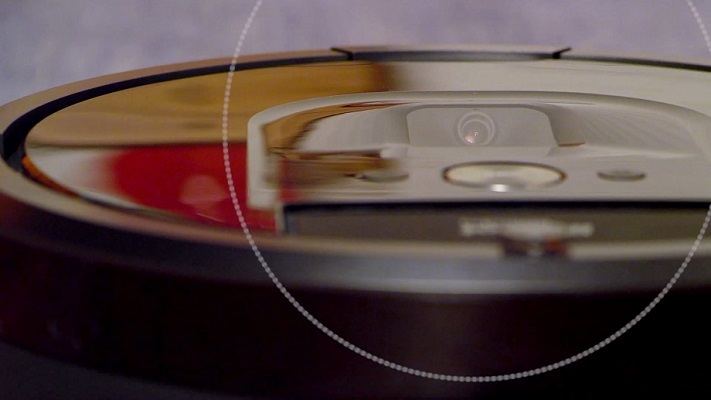
For starters, you will get the camera based navigation and all the bonuses that come with it. Not only will you see a marked improvement in the cleaning patterns, but the linear, human-like patterns create an efficient machine that doesn’t miss much of anything.
Because of the camera, the robot will create an image based map of your home and will then be able to avoid obstacles better as well as know where it has been and where it still has left to clean. This comes in handy in larger spaces where a battery recharge may be needed.
If the battery drops below 15 percent charge, the robot will return to the dock, just like every other previous model. However, because of the map, once the battery is recharged, the robot will undock, return to where it stopped and continue the cleaning cycle.
You won’t have to worry if he scheduled cleaning was complete or not, as the robot will ensure it is all done when you get home (provided you scheduled it while you were away).
The Roomba i7
The late 2018 release of the Roomba i7 series quickly became a fan favorite. Another upgrade to the iAdapt navigation helped increase efficiency and battery life. It also received an upgrade to the mobile app and mapping functionalities. Finally, you also have the option to upgrade to the latest model, the Roomba i7+, if you so desire.
What you will notice is that the Roomba i7 has all of the features of the 960 and previous listed models. What you won’t see right away are the new mapping capabilities that come with the improved design.
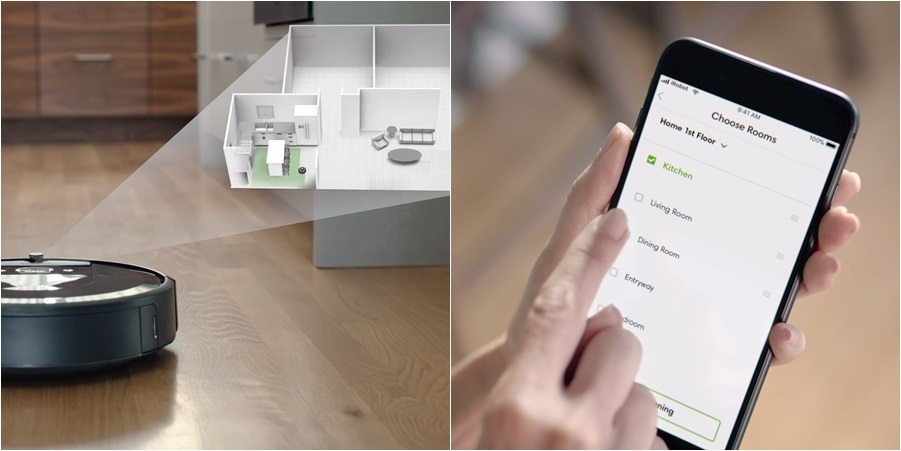
Imprint Smart Mapping is what the new feature is known as. With this enabled, you will find that the mobile app will have an interactive map for you to view. In the map, you can name and label rooms giving you the ability to select specific rooms for cleaning (or avoiding).
This form of digital containment is new for Roomba and works near flawlessly. You also gain the ability to use the room names with your voice commands to have a single room cleaned at any time.
If you want to splurge, you can opt for the upgrade and convert your Roomba i7 into an i7 Plus (i7+). The upgrade consists of a new collection bin and a new charging station. With these in place, you don’t have to empty the collection bin as it is automated.
When the robot docks to recharge the Clean Base charging station the motor in the tower will kick on, suctioning out the collection bin and storing the dirt and debris in a disposable bag. The bag is much like the vacuum bags found in old model uprights and will hold about 25L of debris this equates to about 30 collection bin emptying runs).
Even without the upgrade, the Roomba i7 is arguably the best vacuum on the market today and perfect for capturing all the pet hair, dander and allergens that pet owners deal with daily.
The Roomba i7+
As mentioned above, the Roomba i7+ is the latest and greatest of the entire Roomba line. However, it isn’t a recommended model for pet owners. When if comes to abilities and cleaning, the i7+ is no different than the i7. The robots themselves are identical. In fact, the only difference is the collection bin (though they have the same capacity) and the Clean Base that has the internal vacuum motor).
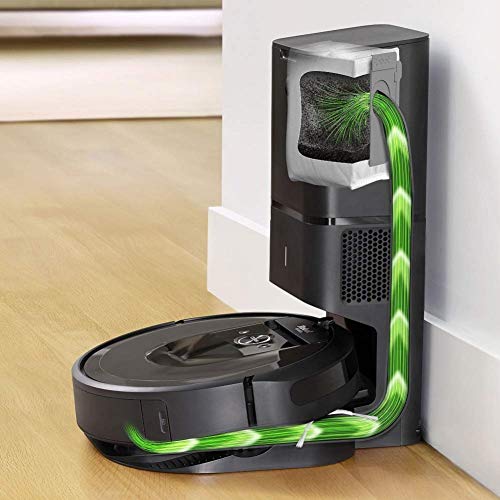
The reason we don’t recommend the i7+ is that the Clean Base is extremely noisy. While the Roomba i7 and i7+ robots are fairly quiet, the motor housed in an empty, plastic housing creates a ton of noise. It also kicks on every time the robot docks.
The good news, though, is that if you purchase the Roomba i7, you can always upgrade the i7+ later. The collection bin with the suction port and the Clean Base charging station are sold as a combo unit separately. All you have to do is make the purchase, put the bin in the i7 model and plug the Clean Base in, removing the Home Base from operation.
In Conclusion
The Roomba Pet Series is a now-defunct line of vacuums. They have been outclassed by the innovations and technology of newer models. While we can’t recommend all of the models designed for pets as a go-to option, there are three models that stand out the most.
The Roomba 890 is a perfect starter model. The cost continues to drop as the newer models are released, but the productivity never fades. If you are looking for a model that will keep up with your floors and pets and don’t want to spend a lot of money, or if you have never owned a robotic vacuum before, the 890 is the best option for you.
The Roomba 960 is a great middle of the road option. It has a few more bells and whistles than the 890 and is older than the i7 series, which helps push the price down to a more manageable level. If you are looking to upgrade from an older model and want the benefits of linear navigation, the Roomba 960 is a solid option to consider.
Finally, the Roomba i7 is the latest model to be released and has all of the technological advances you could hope for. It isn’t perfect, yet, but it is very close to what iRobot set out to accomplish over a decade ago. If you have a large floor plan, multiple pets (or kids) and need a reliable robot vacuum to keep up with you, there is no better option.
